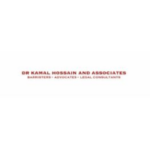-
Is your jurisdiction a common law or civil law jurisdiction?
Canada is a federation with a single national government, and is comprised of ten provincial and three territorial governments. The provincial and territorial legislatures, along with the federal Parliament of Canada, have the power to enact legislation within their constitutional jurisdiction.
Canada is primarily a common law jurisdiction, with nine provinces and all three territories rooted in common law. However, the province of Quebec is a civil law jurisdiction based on the Civil Code of Quebec.
-
What are the key statutory/legislative obligations relevant to construction and engineering projects?
A significant statutory component of the Canadian construction law landscape is the existence of provincial and territorial lien legislation present in each common law province and territory, with a similar remedy (a legal hypothec) existing in Quebec. Lien legislation provides protection for individuals or companies who supply services or materials to an improvement, by ensuring them the right to unilaterally place a charge on the improved property.
Canadian construction lien legislation is unique to each province and territory and will typically include additional aspects significant to the construction industry, including: requirements regarding owner retention of holdback. Most jurisdictions have statutory trust obligations. In some provinces there is also statutory adjudication of construction disputes and prompt paymentlegislation.
In addition to lien legislation, a variety of legislative and regulatory provisions are relevant to construction projects in Canada such as, without limitation, laws governing construction and building standards, the use, development and redevelopment of land, and public procurement.
-
Are there any specific requirements that parties should be aware of in relation to: (a) Health and safety; (b) Environmental; (c) Planning; (d) Employment; and (e) Anti-corruption and bribery.
(a) health and safety;
Federal and provincial labour and employment legislation, in addition to provincial health and safety laws, set out significant health and safety requirements for construction projects. For example, the province of Ontario’s Occupational Health and Safety Act governs health and safety laws in Ontario and imposes specific obligations on the part of constructors. Regulations are passed under the Occupational Health and Safety Act (OHSA). For example, Reg 213/91: Construction Projects, imposes a wide range of obligations to ensure health and safety throughout the lifecycle of a construction project including:
- Mandating protective clothing worn on site and protective equipment and devices to protect workers against potential hazards;
- Ensuring that adequate hygiene is maintained on site; and
- Ensuring safety standards applicable to work in a variety of contexts are followed and maintained.
Also, project owners are employers under the relevant legislation, and as such, have obligations as well in respect of their employees and potentially more broadly.
Provincial labour and employment legislation mandates minimum standards for the health and safety of workers.
Parties involved in construction projects in Canada must ensure compliance with all applicable health and safety laws and standards and obtain appropriate coverage for workers under provincial worker compensation plans. The existence of these mandatory plans means that worker compensation insurance policies are not needed.
Parties should remain diligent in ensuring that procedures prescribed under the applicable regulations are properly enforced on their construction projects, particularly with the expansive definition of “employer” under Ontario’s OHSA following the Supreme Court of Canada’s recent decision in R v Greater Sudbury (City), 2023 SCC 28. There, the Court held that an “owner” of a construction project can be considered an “employer” within the meaning of the OHSA and as such, it can be held liable, subject to a due diligence defence, for a contractor’s violations of workplace safety requirements on a construction project site, even when it engages a contractor to act as the project’s “constructor”.
(b) environmental issues;
Environmental law in Canada is regulated by both the federal and provincial governments. With respect to construction projects, provincial environmental laws will generally apply, with the exception of projects that take place on property that belongs to the federal government or that impact areas of federal jurisdiction, such as the protection of fisheries.
Environmental certificates of approval will typically be required for a variety of projects, including projects that may threaten waterways, wetlands, or fisheries, or where the project lands are historically contaminated. Subject to the type of project, owners or contractors will be responsible for obtaining permits, authorizations and often times, environmental assessments from either or both the federal and provincial governments.
(c) planning;
Each Canadian province, territory, and municipality utilizes legislation, policies and/or bylaws which govern the use, development and redevelopment of land. Parties to a construction or engineering project must confirm that they have obtained the applicable land use permissions, including the appropriate zoning, site plan approvals and environmental approvals relevant to the specific project.
(d) employment;
Canadian labour and employment laws are regulated by both the common law (or the Civil Code in Quebec) and employment legislation. There are a wide variety of both federal and provincial laws, regulations and codes that govern the employment of construction workers. These statutory regimes mandate minimum conditions that employers are required to provide for their employees, including with respect to: working hours and overtime pay; vacations and statutory holidays; and parental leave.
All employers of those involved in construction projects must obtain coverage for their workers through provincial workers’ compensation plans. Employers’ failure to comply with the relevant employment legislation and standards can result in, for example: prosecution; fines; various orders from the government ministry responsible for enforcing employment standards; and civil actions by employees.
(e) anti-corruption and bribery.
In Canada, anti-corruption legislation exists to control both domestic and international bribery and corruption in construction projects relating to procurement, misappropriation, fraud, asset misappropriation, and bribery of domestic and foreign officials. Pursuant to the federal Competition Act, it is an offence to take part in activities such as bid rigging, bid rotation, cover bidding and market division in procurement of government construction contracts. The federal Corruption of Foreign Public Officials Act makes it an offence to bribe a foreign official, including outside Canada if the person is a Canadian citizen, permanent resident, or is a corporation or company formed under the laws of Canada or a province.
-
What permits, licences and/or other documents do parties need before starting work, during work and after completion? Are there any penalties for non-compliance?
Prior to commencement of construction, permissions with respect to land use must be secured usually through a site plan approval process. Also, construction projects are generally required to comply with provincial building code legislation, and with municipal by-laws respecting building permits. As noted above, provincial and federal environmental permits may be required. Projects that fall within federal jurisdiction also generally require federal licenses or permits. Constructors must obtain a building permit, or permits, from the applicable municipality, in order to construct, renovate or demolish any building. When the project is complete, the owner or contractor must obtain an occupancy permit, issued only once the applicable requirements under the relevant building code legislation have been met.
-
Is tort law or a law of extra-contractual obligations recognised in your jurisdiction?
Tort law is recognized in common law Canada, while in Quebec, it is subsumed within the general law of obligations. Tort law is an important part of Canadian common law as it provides individuals with a legal remedy for harm caused by the wrongful acts or omissions of others.
In the context of construction projects, tort law (or the law of obligations) can apply to issues such as negligence, nuisance, and trespass. In some construction contracts, actions in tort are explicitly not permitted.
In addition, extra-contractual obligations may arise from statutory obligations or common law duties, although the latter may be excluded by contracting out of such duties.
-
Who are the typical parties involved in a construction and engineering project?
Subject to the nature of the project and the delivery model selected, the main parties to a construction or engineering contract include the following:
Owner: Public sector owners often participate in infrastructure projects, such as the federal government’s involvement in international bridges and airports, and the provinces’ and municipalities’ investment in projects such as water and wastewater, schools, hospitals, long-term care facilities, courthouses, prisons, offices, and linear transit. Private sector owners often invest in commercial, industrial or institutional projects. Residential development is also a major source of private-sector owner investment across Canada.
General Contractor: The general contractor is engaged by the owner and is responsible for the construction work on the project, hiring subcontractors, and ensuring that the work is completed to the agreed-upon plans and specifications set out in the construction contract. In Canada, contractors can range in size and geographical reach, from sole proprietors working primarily on residential new builds and renovations, to medium-sized regional contractors, to established national general contractors, to large joint ventures created for specific projects.
Subcontractors: Similar to general contractors, subcontractors can range in size and geographical reach, from sole proprietors to international enterprises comprised of highly specialized experts. Subcontractors are generally engaged by the general contractor to perform specific types of work, such as mechanical, electrical, or plumbing work. Subcontractors are responsible for completing the subcontracted scope of work to the agreed-upon plans and specifications and within the allotted time frame set out in the subcontract.
Financers: Depending on the project, public infrastructure projects are financed either directly by federal, provincial or municipal governments (individually or jointly), or are public-private partnerships that include a private sector financing component. Private sector projects are funded either directly by self-funded investment, including share and/or subordinated debt offerings, or through various lending structures such as commercial bank loans and/or capital market bonds.
All parties involved in construction and engineering projects in Canada have specific legal rights and obligations, which are typically outlined in agreements between the parties. These agreements should be carefully reviewed as they establish the scope of work, payment terms, and legal liabilities and obligations of each party.
-
What are the most popular methods of procurement?
Public sector owners in Canada are generally required, subject to narrow exceptions, to use competitive procurement processes to purchase goods and services and are bound by legislation and policies in this regard. Similar requirements do not exist in the private sector, but due to the advantages of competitive bidding, private owners and contractors regularly use formal procurement processes to purchase goods and services for larger projects.
It is important to keep in mind the common law principles that govern the tender and RFP processes in Canada, including:
- Enhancing competition for owners to obtain the most competitive price for labour and materials; and
- Ensuring that the tender/RFP process is fair and that all bidders are treated equally.
-
What are the most popular standard forms of contract? Do parties commonly amend these standard forms?
In Canada, standard form construction contracts are widely used on a variety of construction projects. The most commonly used standard form contracts are developed by the Canadian Construction Document Committee (CCDC), an industry organization that develops standard form construction contracts, forms and guides. In particular, the CCDC Stipulated Price Contract (CCDC 2) is one of the most commonly used standard form contracts in Canada while the CCDC Construction Management Contract (CCDC 5B) has seen its popularity grow over the past several years.. In addition to the CCDC suite, the Canadian Construction Association publishes standard form subcontracts, which are also widely used in Canada.
In Canada, the federal government has its own set of standard forms, as do the provinces, municipalities, and other public sector entities. In particular, infrastructure projects are often built using standard forms developed over an extended period of time by entities such as, in the province of Ontario, Infrastructure Ontario.
Frequently, the terms of the standard form contract are modified through the use of customized supplementary conditions.
While standard form contracts can be more cost-effective than bespoke contracts, they may not fit the specific needs of complex projects, such as the appropriate allocation of risk. As such, owners may choose to use a bespoke form of contract..
-
Are there any restrictions or legislative regimes affecting procurement?
Canadian governments and courts have developed robust laws, regulations, policies, directives, guidelines and procedures that govern public procurement. Generally speaking, municipal contracting processes are governed by common law and codified in municipal statutes, purchasing by-laws, contracting policies and purchasing procedures.
-
Do parties typically engage consultants? What forms are used?
For projects other than those utilizing a design-build or EPC delivery system, owners engage consultants to provide design services for the project. The most commonly used form to retain an architect is the Royal Architectural Institute Contract Form, RAIC 6. When an engineer is the prime consultant on a project, the contracting forms provided by the Association of Consulting Engineers of Canada are frequently used, most commonly, form ACEC 2.
-
Is subcontracting permitted?
Subcontracting is permitted in Canada. There are a wide variety of specialized subcontractors.
Subcontracts typically incorporate the obligations of the prime contract between the owner and contractor.
-
How are projects typically financed?
In the public sector, infrastructure projects are either funded directly by federal, provincial or municipal governments (individually or jointly), or are public-private partnerships with a private sector financing component.
In the private sector, construction projects are funded through self-funded investments or various lending structures – for example, through bank loans, construction loans or share and/or debt offerings.
-
What kind of security is available for employers, e.g. performance bonds, advance payment bonds, parent company guarantees? How long are these typically held for?
In Canada, owners (employers) may protect their interests by requiring the contractor to provide a performance bond and labour and material payment bond (which the contractor may in turn require of its subcontractors), as well as by requiring parent company guarantees. Such securities typically remain in place until completion of the project. Security in the form of letter(s) of credit is also used frequently.
-
Is there any specific legislation relating to payment in the industry?
Several Canadian provinces have adopted or are in the process of adopting mandatory prompt payment regimes into their existing construction lien legislation. Additionally, the federal government’s Federal Prompt Payment for Construction Work Act applies to federal construction projects.
By way of example, Ontario was the first jurisdiction in Canada to legislate a mandatory prompt payment mechanism within its Construction Act, setting out specific payment milestones which are triggered upon the contractor’s submission of a ‘proper invoice’ to the owner. Having said this, the Construction Act provides that the payer of the invoice has the right, subject to the obligation to provide timely notice to the payee, to offset outstanding debts, claims for defects in the work performed by the payee, or other back charges, by deducting from the amount due under the invoice. Statutory adjudication is available to resolve such payment disputes.
-
Are pay-when-paid clauses (i.e clauses permitting payment to be made by a contractor only when it has been paid by the employer) permitted? Are they commonly used?
Pay-when-paid clauses are sometimes used in Canada. Their enforceability will depend on the clarity of their terms and the attitude of the courts may vary by jurisdiction.
From a common law perspective, Canadian courts have recognized that pay-when-paid clauses can result in an unfair risk transfer to subcontractors when owners fail to provide payment in a timely manner. Given the potential unfairness, Canadian courts will typically interpret these provisions strictly. As such, pay-when-paid clauses must be drafted in a clear and unambiguous manner, and set out precisely the circumstances wherein a subcontractor will not be paid for work performed, if a contractor plans to rely on it as justification for the non-payment of a subcontractor. Ambiguity may result in the unenforceability of pay-when-paid provisions, and such ambiguity may be interpreted against the drafter of the contract (typically the payor).
In provinces where prompt payment and adjudication legislation has been adopted, pay-when-paid provisions may be regulated by the legislation. In Ontario, the obligation of the contractor to pay its subcontractors is conditioned upon the contractor’s receipt of payment from the owner, a form of statutory pay-when-paid.
-
Do your contracts contain retention provisions and, if so, how do they operate?
In the common law provinces, statutory lien legislation requires owners to retain a percentage of the contract price from each payment to the contractor as “holdback”. At a high level, the purpose of the holdback is to protect subcontractors and suppliers that supply services and materials to the improvement.
By way of example, under Ontario’s Construction Act, each payer upon a contract/subcontract is required to retain a holdback equal to 10% of the price of the services or materials supplied under the contract/subcontract until all liens that may be claimed against the holdback have expired, been satisfied or discharged. Further, under Ontario’s Construction Act, the payer upon a contract or subcontract is required to retain a separate ‘finishing’ holdback equal to 10% of the price of the services or materials remaining to be supplied under the contract or subcontract after substantial completion, until all liens that may be claimed against the holdback have expired, been satisfied or discharged.
Additional holdbacks or retentions (e.g. maintenance or warranty holdbacks) may be agreed to between the parties by way of contract and are not uncommon.
-
Do contracts commonly contain liquidated delay damages provisions and are these upheld by the courts?
Construction contracts in Canada frequently include liquidated damages provisions that are triggered when a contractor has failed to meet a particular contractual milestone. Typically, the owner is able to set off or deduct from the progress payments for the liquidated damages, minus any statutory holdback.
It is important to note that under current Canadian common law, penalty clauses are unenforceable on the grounds of public policy. As such, liquidated damages provisions should represent a genuine pre-estimate of the loss which the innocent party will incur by reason of the breach, or else a court or arbitrator may determine the liquidated damages provision is a penalty clause and is therefore unenforceable. Having said this, the law in this area is evolving, such that the issue of enforceability may be more nuanced in certain circumstances.
-
Are the parties able to exclude or limit liability?
Limitation of liability clauses are enforceable in Canada and are commonly included in large civil works or infrastructure contracts. Such clauses typically excluding consequential damages from liability, such as loss of profit, loss of use, and other “indirect damages”.
Canadian courts have long recognized that parties can agree to contractually limit liability in either contract, tort or both, where the contract clearly indicates that the parties intended to waive, limit or negate that liability. The enforceability of such clauses is determined through a plain and literal reading of the language in the provision. Where there is ambiguity, courts will construe such clauses strictly against the party who wishes to rely on them. As such, a party wishing to rely on an exclusion of liability clause must ensure the clause is drafted clearly.
In Tercon Contractors Ltd. v. British Columbia (Transportation and Highways), 2010 SCC 4, the Supreme Court of Canada also established the following three-part test, which courts will employ when deciding whether an exclusion clause is valid and operative in a given case:
- Does the clause actually apply to the circumstances of the case;
- If the clause applies, was it unconscionable at the time the agreement was entered into; and
- Are there any overriding public policy reasons for refusing to enforce the exclusion clause.
Fundamentally, if the court determines that the clause applies to the case, and is not invalid by reason of unconscionability or public policy, then it will be enforced.
-
Are there any restrictions on termination? Can parties terminate for convenience? Force majeure?
Construction contracts almost invariably contain express termination clauses that outline when a party has a right to terminate the contract. For example, the insolvency of a contractor is typically grounds for termination, and most construction contracts provide that, subject to proper notice, an owner is entitled to terminate the contract if the contractor fails to perform the work properly or fails to cure certain breaches. Further, construction contracts typically set out a specific set of defaults that give a party the right to terminate the contract. Termination for convenience clauses, whereby the owner can terminate at its discretion, are not typical in Canadian construction contracts (although they are more common on larger projects), but are enforceable.
In addition to express termination clauses, at common law, a party to a contract has the right to terminate on the grounds of their contractual counterparty committing a repudiatory breach. Such a breach goes to the root of the contract and has the effect of depriving the non-breaching party of substantially the whole benefit of the contract.
Force majeure provisions are also enforceable under Canadian law and are normally included in construction contracts, and in some contracts, a force majeure event that exceeds a specified duration (e.g. 180 calendar days) may give rise to a right to terminate for convenience.. A specific force majeure provision will define what constitutes a force majeure event for that particular contract. Generally speaking, force majeure provisions operate to excuse a party’s performance when its failure to perform the work is caused by circumstances outside of the party’s control, but which does not satisfy the common law doctrine of frustration. Common examples of force majeure events that can be found in construction contracts include:
- acts of God (storms, earthquakes or floods);
- wars or invasions;
- pandemics;
- acts of terrorism; and
- work stoppages due to labour strikes.
A party wishing to rely on a force majeure provision must be prepared to provide evidence which establishes that the force majeure event is the actual cause of the party’s inability to perform its contractual obligations, and such relief will typically be subject to notice requirements.
-
What rights are commonly granted to third parties (e.g. funders, purchasers, renters) and, if so, how is this achieved?
The Supreme Court of Canada, through its decisions of London Drugs Ltd. v Kuehne & Nagel International Ltd., 1992 CanLII 41 (SCC) and Fraser River Pile & Dredge Ltd. v Can-Dive Services Ltd., 1999 CanLII 654 (SCC), developed the “principled exception” to the doctrine of privity, which allows third party beneficiaries to enforce a contract to which they are not a party. Later cases have held that where the parties to a contract express a mutual intention to benefit a non-party then such rights may be enforceable by the non-party.
In practice, third-party beneficiaries are typically more successful in using such rights to defend against claims, while they have faced greater difficulty in attempting to use those rights to advance claims of their own. In fact, construction contracts are frequently drafted to contain language expressly excluding third parties from enforcing any rights.
-
Do contracts typically contain strict provisions governing notification of claims for additional time and money which act as conditions precedent to bringing claims? Does your jurisdiction recognise such notices as conditions precedent?
In Canada, construction contracts generally will include multiple notice provisions that contain formal requirements with respect to the timing and procedure in which a party may make and deliver its claim, as well as the substantive content of the notice. Indeed, notice requirements are very frequently the subject matter of dispute on construction projects in Canada.
Generally speaking, notice provisions are valid and enforceable under Canadian common law and courts, depending on the jurisdiction, may only relieve a party from its failure to comply with a notice provision in very limited circumstances. The Ontario courts generally interpret notice provisions pursuant to a theory of strict compliance, while other jurisdictions, such as British Columbia, have occasionally accepted a slightly more relaxed approach in allowing for constructive notice to satisfy contractual notice requirements.
Regardless of jurisdiction, it is best to treat notice provisions as strictly enforced and ensure compliance, rather than attempting to persuade a court that an exception applies.
-
What insurances are the parties required to hold? And how long for?
The most common insurance products issued in respect of construction projects, are builder’s risk policies, commercial general liability/wrap-up liability policies, and professional liability policies. Other insurance policies that are commonly used in construction projects include boiler and machinery insurance, pollution insurance and contractor’s equipment insurance. It is usually required that these policies remain in place throughout the construction period of a project. Where a project involves a maintenance term, a separate insurance regime will usually be in place – including property coverage and various forms of liability coverage suitable for the project.
In addition, and as detailed above, it is mandatory for every employer in Canada to maintain coverage with the applicable provincial workers’ compensation insurance plan which obviates the need for worker compensation insurance policies.
-
How are construction and engineering disputes typically resolved in your jurisdiction (e.g. arbitration, litigation, adjudication)? What alternatives are available?
In Canada, the majority of construction disputes proceed to negotiation, mediation and/or arbitration, although some construction disputes proceed by way of litigation. While there are no specialist courts to hear construction disputes in Canada, some specialist associate judges preside over lien actions in Toronto, Ontario.
Besides the courts, some provinces have introduced mandatory statutory adjudication regimes aimed at facilitating efficient dispute resolution on an interim binding basis. Adjudication has continued to become more widely adopted as industry participants become more familiar with the concept over time.
Mediation has been highly successful and continues to have broad application in construction dispute resolution. As such, mediation is often mandated in complex construction contracts as part of the contractually defined and agreed upon dispute resolution process. Arbitration is also regularly used to resolve construction disputes in Canada. All arbitration proceedings are subject to provincial, or federal, arbitration legislation.
In addition to mediation and arbitration, although not nearly as widely used, contracting parties have increasingly used dispute review boards and/or dispute adjudication boards, comprised of independent technical experts who regularly attend the project site, to assist in the resolution of disputes as they arise on the project. Further, some construction contracts utilize bespoke dispute resolution schemes to provide for different forums to resolve different disputes that arise on the project.
-
How supportive are the local courts of arbitration (domestic and international)? How long does it typically take to enforce an award?
Arbitration is frequently used to resolve construction disputes in Canada, and the Canadian courts are strongly supportive of arbitration. Public entities and government agencies will regularly participate in private arbitrations to resolve construction disputes. It is common for construction contracts for complex projects to include a mandated private arbitration or the use of dispute adjudication boards as part of the contractually agreed upon dispute resolution process.
Provincial arbitration legislation varies in its approach to the permissibility of appeals to the courts from an arbitral award; however, as a general rule, only issues of law may be appealed with leave of the court, unless the contract provides for an appeal of issues of mixed fact and law – which is rarely the case. Matters of contractual interpretation are considered issues of mixed fact and law. In the absence of a valid appeal, awards are enforceable in a relatively short period of time.
Limitation periods for enforcing arbitral awards vary in length across Canadian provinces. While some provincial legislation is silent on the limitation period for enforcing an award, Ontario, for example, provides for 10 years from the date the award was received, or where there was a proceeding to set aside an award, 10 years from the date on which the proceeding concluded.
-
Are there any limitation periods for commencing disputes in your jurisdiction?
Limitation periods for commencing disputes in Canada vary across provincial jurisdictions. The limitations statutes in both Ontario and British Columbia provide for a two-year period from the date of discovery of a cause of action, with an ultimate limitation period of 15 years from the date the wrongful act occurred.
-
How common are multi-party disputes? How is liability apportioned between multiple defendants? Does your jurisdiction recognise net contribution clauses (which limit the liability of a defaulting party to a “fair and reasonable” proportion of the innocent party’s losses), and are these commonly used?
It is common for construction disputes to involve multiple parties from different levels of the contractual pyramid. However, with respect to arbitration, it is generally not possible in Canada to require other parties to participate in the arbitration without the consent of all the parties, unless the arbitration agreement provides otherwise or the arbitration agreement is incorporated by reference into other contracts (e.g. via subcontract incorporating the prime contract by reference).
Agreement among the parties to participate in a multi-party arbitration can be contractually provided for; however, this is rarely done, as it is more common for a multi-party arbitration to be agreed upon after the dispute has arisen. It is important to note that to be enforceable, an agreement to participate in a multi-party arbitration must be clear and unambiguous, include particulars as to the procedural requirements for joining the proceeding, and must be included in every contract within the contractual chain. Some public infrastructure project contracts include language to address this issue by including clauses that address joinder or consolidation of arbitrations.
Broadly speaking, Canadian courts will allocate liability (whether that be in contract or tort) where multiple persons contribute to damages suffered. Net liability contractual provisions, though, are rarely encountered. As noted above, Canadian courts have recognized that parties can agree to contractually limit liability in either contract, tort or both, where the contract clearly indicates that the parties intended to waive, limit or negate liability.
Parties to contracts can also agree to cap liability at a specific amount. In construction projects, these caps are most commonly seen in professional services agreements for design or engineering services. Here, the caps on liability are commonly related to the fee for the service or the amount of professional liability insurance coverage available to the architect or engineer.
-
What are the biggest challenges and opportunities facing the construction sector in your jurisdiction?
Some challenges facing the construction sector in Canada include:
- Labour and material shortages: one challenge to consider is whether there will be a sufficient amount of skilled labour to keep up with the demand of construction growth, particularly as skilled labour continues to retire;
- Ongoing effects of supply chain issues, which may be exacerbated by the implementation of tariffs;
- The cost of materials and labour (which are likely to be impacted by tariffs); and
- Softening market demand for new residential and office construction, along with an increase in insolvencies of residential developers (and consequently, distressed projects).
Some opportunities facing the construction sector in Canada include:
- New technologies are transforming the construction industry so as to improve efficiency and reduce costs;
- The push for sustainable construction practices creates opportunities for parties to construction projects that are able to implement green building techniques;
- Infrastructure investments from the Canadian government in a variety of areas including public transit and affordable housing, and the potential exclusion of U.S. contractors from competing for such procurements;
- Renewed discussion amongst provincial and federal governments regarding the reduction of inter-provincial trade barriers; and
- Removal of GST for newly constructed purpose-built rental housing.
-
What types of project are currently attracting the most investment in your jurisdiction (e.g. infrastructure, power, commercial property, offshore)?
Projects currently attracting the most investment in Canada are infrastructure projects in: transit, healthcare, highways and bridges, public buildings and utilities, energy, and water/wastewater remediation.
-
How do you envisage technology affecting the construction and engineering industry in your jurisdiction over the next five years?
In order to remain competitive, project participants will need to adopt and leverage new technologies and tools surrounding data collection and the analysis of project data, as well as implement AI as its use in construction continue to grow.
For example, data analytics can help identify cost and schedule drivers, the identification and analysis of which can provide important insights to the project team(s), and optimize performance and efficiency. Further, technologies and tools surrounding predictive analytics can aid in improving scheduling, accuracy of cost-estimating and can help to optimize work planning by analyzing past projects and factoring in project-specific variables for future projects. When used effectively, technology can significantly improve efficiency – improving data collection and highlighting existing inefficiencies, which in turn enhances decision-making quality and agility, and boosts productively while reducing labour.
In addition, technology will likely see greater deployment on construction projects in order to enhance site monitoring and safety (such as the use of drones to identify and eliminate safety hazards or logistic chokepoints), as well as improve quality control and defect detection (such as through the use of machine learning algorithms).
-
What do you anticipate to be the impact from ongoing supply chain issues and the escalation of material costs over the coming year?
Since the onset of the COVID-19 pandemic, there has been a marked increase in claims for delay and disruption, claims relating to supply chain issues, and claims related to the increased price of materials and labour. The War in Ukraine and the War in Gaza have also resulted in supply chain disruption.
While there has been an overall continuing trend toward material price stabilization, compared to the level of market volatility previously seen during the COVID pandemic, raw material shortages in regional locations, weather events, and geopolitical issues have all contributed to a continuing element of unpredictability. Recently, this has also been significantly exacerbated by the imposition of tariffs between multiple jurisdictions, including those that are major suppliers of key material inputs on construction projects.
Accordingly, we may see a growing trend of Canadian contracts including material price escalation clauses as a means to manage the risk associated with material price escalation, shifting the risk of material price escalation to owners. In particular, we have begun to see a demand for construction contracts to include express language addressing material price escalation related to the imposition of tariffs, and we expect this trend to continue should the risk of tariffs materialize.
Canada: Construction
This country-specific Q&A provides an overview of Construction laws and regulations applicable in Canada.
-
Is your jurisdiction a common law or civil law jurisdiction?
-
What are the key statutory/legislative obligations relevant to construction and engineering projects?
-
Are there any specific requirements that parties should be aware of in relation to: (a) Health and safety; (b) Environmental; (c) Planning; (d) Employment; and (e) Anti-corruption and bribery.
-
What permits, licences and/or other documents do parties need before starting work, during work and after completion? Are there any penalties for non-compliance?
-
Is tort law or a law of extra-contractual obligations recognised in your jurisdiction?
-
Who are the typical parties involved in a construction and engineering project?
-
What are the most popular methods of procurement?
-
What are the most popular standard forms of contract? Do parties commonly amend these standard forms?
-
Are there any restrictions or legislative regimes affecting procurement?
-
Do parties typically engage consultants? What forms are used?
-
Is subcontracting permitted?
-
How are projects typically financed?
-
What kind of security is available for employers, e.g. performance bonds, advance payment bonds, parent company guarantees? How long are these typically held for?
-
Is there any specific legislation relating to payment in the industry?
-
Are pay-when-paid clauses (i.e clauses permitting payment to be made by a contractor only when it has been paid by the employer) permitted? Are they commonly used?
-
Do your contracts contain retention provisions and, if so, how do they operate?
-
Do contracts commonly contain liquidated delay damages provisions and are these upheld by the courts?
-
Are the parties able to exclude or limit liability?
-
Are there any restrictions on termination? Can parties terminate for convenience? Force majeure?
-
What rights are commonly granted to third parties (e.g. funders, purchasers, renters) and, if so, how is this achieved?
-
Do contracts typically contain strict provisions governing notification of claims for additional time and money which act as conditions precedent to bringing claims? Does your jurisdiction recognise such notices as conditions precedent?
-
What insurances are the parties required to hold? And how long for?
-
How are construction and engineering disputes typically resolved in your jurisdiction (e.g. arbitration, litigation, adjudication)? What alternatives are available?
-
How supportive are the local courts of arbitration (domestic and international)? How long does it typically take to enforce an award?
-
Are there any limitation periods for commencing disputes in your jurisdiction?
-
How common are multi-party disputes? How is liability apportioned between multiple defendants? Does your jurisdiction recognise net contribution clauses (which limit the liability of a defaulting party to a “fair and reasonable” proportion of the innocent party’s losses), and are these commonly used?
-
What are the biggest challenges and opportunities facing the construction sector in your jurisdiction?
-
What types of project are currently attracting the most investment in your jurisdiction (e.g. infrastructure, power, commercial property, offshore)?
-
How do you envisage technology affecting the construction and engineering industry in your jurisdiction over the next five years?
-
What do you anticipate to be the impact from ongoing supply chain issues and the escalation of material costs over the coming year?



















